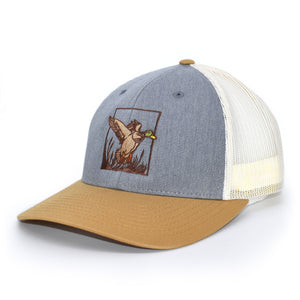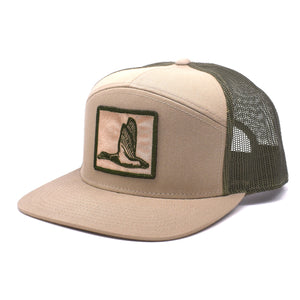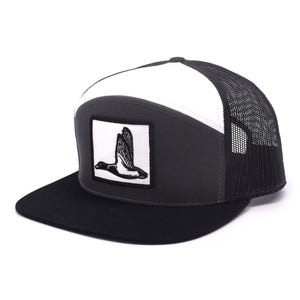Phase: PRE-RUT
Average Dates: October 18 – November 2
Scouting Tactics: Scout food sources like Oak trees/acorns, fruit trees, cut corn, alfalfa and other mast which is likely to attract deer. Look for rubs and scrapes on the edges of these areas. Some scrapes may still be fairly faint in the earlier parts of the pre-rut.
Best Communication Tactics:
Grunting: grunting is perhaps the best communication method at this time.
Decoy: As bucks have rising testosterone levels at this time they are starting to check feeding sites for the first hot doe. Try a decoy in one of these areas and you might get a good shot.
Rattling: Bachelor groups may start establishing dominance/heirarchy at this time through sparring. Rattling during the pre-rut is more likely to attract subordinate bucks than the more mature bucks.
Important Notes: During this pre-rut you may start to see the first signs of rutting activity as a small percent (around 10%) of does come into estrus around the pre-rut moon, but that typically drops off quickly. Older does sometimes breed several weeks ahead of other does and bucks may start seeking them out at this time. Start looking for rubs and scrapes, especially towards the end of the pre-rut. These signs are left by bucks to let the does know that he is nearby and will be ready to give them some lovin’ when they are ready…and that he’ll be back soon.
Phase: SEEKING AND CHASING
Average Dates: November 3-12
Scouting Tactics: Look for fresh rubs and rub lines. If you find a hot one, hunt it as soon as possible.
Best Communication Tactics:
Grunting: If you’re in a low pressure hunting area, grunting may be a great option during seeking and chasing. If you’re in a high-pressure area however, it may be best to not do any calling at all.
Decoy: Intently looking for hot does, bucks can respond well to decoys during this phase.
Rattling: As testosterone levels in bucks are high at this time, they’re more likely to pick a fight, or check out and challenge other sparing bucks to show their dominance. Rattling works best in areas with higher buck to doe ratios. In areas with low buck to doe ratios rattling should be used sparingly or not at all because bucks typically don’t need to fight to find hot does.
Important Notes: Scrapes that were being checked frequently just a week or two ago are starting to be ignored and become less relevant, as bucks are starting to pursue does that are coming into estrous. They may, however start aggressively rubbing trees to vent their pent-up energy and show off their self-perceived dominance to other bucks. If you find one of these rubs during the late pre-rut, hunt it as soon as possible. If you’re hunting an area that doesn’t get a lot of pressure, you can feel free to grunt, snort-wheeze or doe bleat fairly aggressively. Be ready when you do. If you hunt a more pressured area, you’ll want to use calling techniques more sparingly.
During this phase, bucks will start checking the does’ scent and chase them aggressively. Find the does at this time and you’re more likely to find the bucks. Younger bucks will travel the more prominent deer trails from doe area to doe area. Mature bucks will still follow heavier cover between doe areas (creek bottoms, ditches, strips of thick cover). Look for one of these areas with fresh tracks to find the big boys.
Phase: PEAK BREEDING
Average Dates: November 13 – November 24
Scouting Tactics: Look for scrapes and rub lines and travel corridors between doe bedding areas. Get on stand and hunt all day.
Best Communication Tactics:
Rattling: During the actual rut most fighting is between dominant rivals of more equal stature and could scare off more subordinate bucks.
Grunting: Aggressive calling works well at this time, if hunting a low-pressure area.
Doe Bleat: Doe bleats work well at this time since bucks are aggressively looking for hot does.
Estrous Doe Lures: Estrous scents can work well at this time if used properly. Try using a drag-rag and making a figure-8 trail, placing your stand or blind at the apex. Trolling bucks may get wind of your trail and follow it right to your stand site. During the final day or two of the rut, try hunting thicker cover in or near a bucks core area again. They’ll often return to these areas to recover after a very intense few weeks of chasing and breeding.
Important Notes: During peak breeding, bucks are looking to pair up with a hot doe and may be “hunkered down” with her during her 24-36 hour breeding cycle. During this time the woods may seem to quiet down. But don’t be fooled, this is still a great time to be in the stand all day long. That’s because big bucks will move at mid-day as they leave the doe they’ve just bred and seek out another that is just coming into estrous.
Phase: POST RUT & SECONDARY RUT
Average Dates: November 25-December 15
Scouting Tactics: During the post rut, hunt food sources next to thick cover. Bucks will be looking to feed in these areas to get their strength back after peak breeding.
Best Communication Tactics:
Doe Bleats & Estrous Scents: With the primary rut over, bucks are less likely to respond to aggressive grunts, tending grunts or rattling. However, as long as a buck is carrying his antlers we know his testosterone levels are still elevated, so calling with doe bleats and strategically using estrous scents can still work in your favor.
Important Notes: After they’ve had a few weeks to rest and feed in remote, heavy-cover areas, bucks will start to move again during the post-rut to look for younger does that didn’t breed and are coming into heat. About 28 days after the peak rut, the 10%-20% of does, the ones that didn’t get bred during their first estrous cycle, will become “hot” again. Find the does, particularly the younger does that are more likely to be coming into estrous late. If you find them, bucks will usually follow. This is a good time to set up near staging zones at doe bedding areas or brush covered field edges.
The post rut is the same as the peak-breeding phase in many ways, although it is much less intense and bucks are less aggressive. At this time bucks may still be roaming about and checking doe feeding and bedding areas to find the last un-bred doe. If you haven’t filled your tag yet, stay the course. This is still a pretty good time to hunt.
The post Phases of the Rut: In Detail appeared first on Bucks of Nebraska.


































